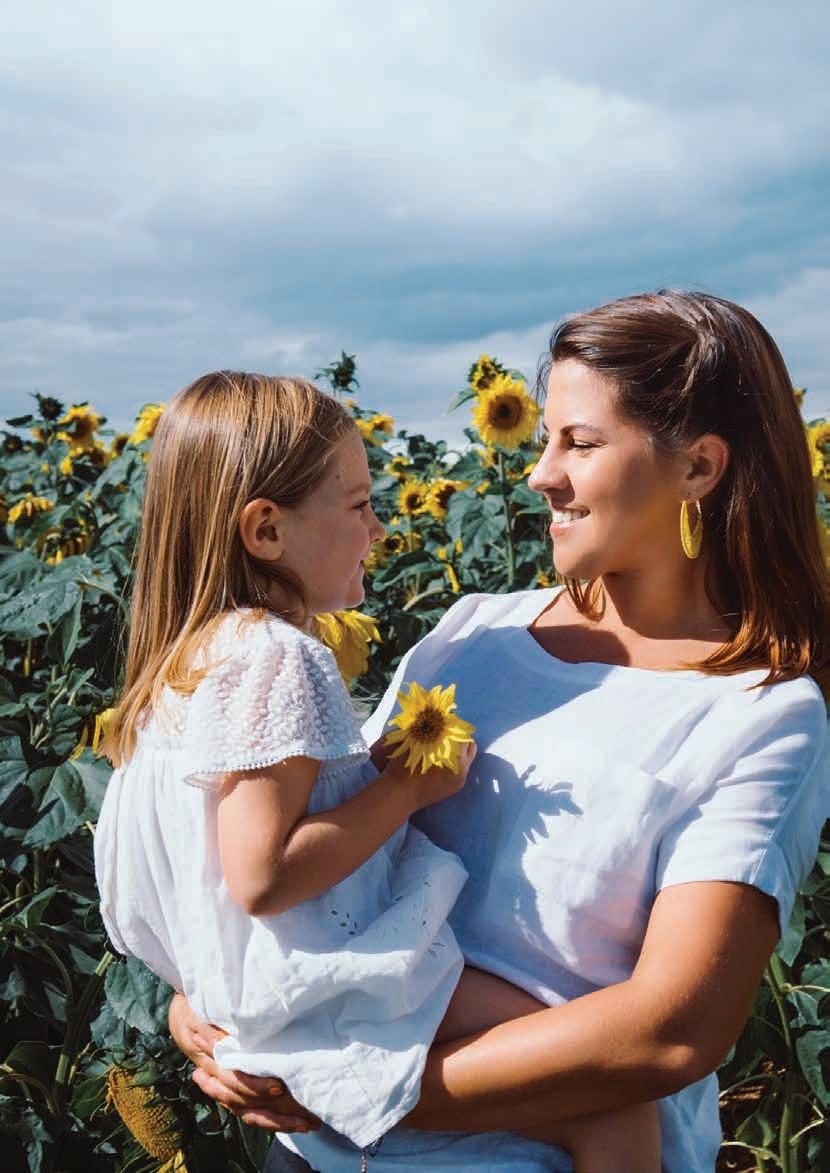
4 minute read
Does she ever stop talking?
HOME LIFE Does she ever stop talking? “
By Aimee Hart
Advertisement
26 | Cherubs Magazine Photo credit: @libby_pearce
“Does she ever stop talking?” That’s a phrase I’ve heard about my daughter since she began the back and forth dance of conversation. Talking is one of, if not the most, important component of literacy and begins before a child has seen a book or picked up a pencil. Without the bank of vocabulary that children develop as they go through toddler-hood, their understanding of the most basic things is flawed. This is called oral language and children are born as a blank slate. No words present here until they are gifted them by those around them. An interesting study (it was interesting, I promise) was conducted on what is now known as ‘The 30 Million Word Gap’, which proved that parents hold the key to children’s language development. The study concluded that by the time they are four years old, children who have basic interactions with language will know 30 million fewer words than their peers who have been given a rich variety of opportunities to converse. They then commented on the tight link between the number of words a child hears to their future academic success.
So, what can we do to support our offspring as they solidify their rich language skills? How can we ensure that the part of the brain built to digest language around them is secure and robust? This article will give you an insight into different ways to open the doors to meaningful chatter.
Language development is based on three functions: direction, instruction and dialogue.
Direction is the first and main source of language that children hear from the day they are born. Parents will babble at their offspring knowing full well it will be a one-sided conversation. “Look at Daddy”, “Grab your toy”, “Walk to Mummy” are all sentences that begin early in childhood and develop into more structured direction as the children grow. “Eat your dinner please”, “Get dressed quickly” and “Put your rubbish in the bin” are ways to ensure children follow routines and complete simple tasks. All necessary to ensure children make links between the verbal and the physical.
Instruction is built from these groups of words and the children then manipulate the words within their head and internalise them. “If you hold your brush like this you will be able to paint better”, “That is a lion, a baby lion is called a cub” and “If you press this button the computer will come on” will all leave an imprint on the children’s minds for future reference. They move the physical into the meaningful.
Direction and instruction are key for children to make their way in the world. Understanding how to complete simple actions and following instructions can only happen if the vocabulary is given to them correctly and coherently.
Dialogue is where we see the 30-million-word gap emerging. Opportunities for extended, rich, powerful conversations are key to challenging children’s current understanding and progressing that understanding further. Using sentences that start with ‘the five Ws’ – who, what, where, why, when – and then challenging them further with ‘How questions will encourage the children to use words more randomly. For example, when reading a book, stop periodically and ask:
What do you think will happen next in the story? Who do you think is going to solve the problem? Why do you think the girl is sad? How do you know she feels like that? When have you felt like that before?
These questions will engage their own voice within their head and begin their own individual thought process. Offer your interpretation of these questions too, this will only add to the varied vocabulary for the children to digest. Conversation and reading go hand in hand, supercharging the language and reading experience for both the child and the parent. These three elements will then ensure the children take the verbal to the meaningful and understanding.
Top Tips for Building Vocabulary: 1. Find the time – find as many points in the day to talk about anything and everything. In the car, at the shops, during bath time. Ask those key questions and listen to the words they respond with. Even if it seems nonsensical, give them time to elaborate or rephrase. 2. Use those big words – don’t be afraid to use words they may not (or will not) know. Or think of synonyms for a commonly used work e.g. rather than ‘good’ use magnificent, wonderful, stupendous! The children will giggle but you can guarantee they will use them in the future – having been added to the vocabulary bank. 3. Turn taking – talkative parents will allow for more turn taking within conversations. Let the children elaborate regularly and give them opportunities to revise situations. For example: “So, tell me more about” or “What happened in that film?” 4. Books – the written word can light the fire of vocabulary and by the time children get to school they will have already developed the ability to share a story. “This is mummy’s favourite”, “I read this to you when you were a baby” and “Why do you choose this book so often?” Having had parents who read to me constantly and discussed books frequently there are books that hold a special place in my heart. In the vocabulary bank, books are the interest that enables the bank balance to slowly increase.
In a nutshell, talking to your child using varied vocabulary as often as possible and letting them build their own voice, is the best way to develop their ability to express themselves clearly and converse with ease.









